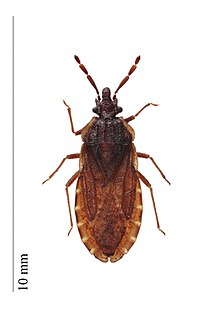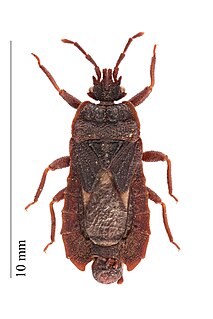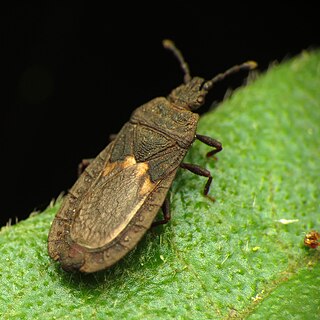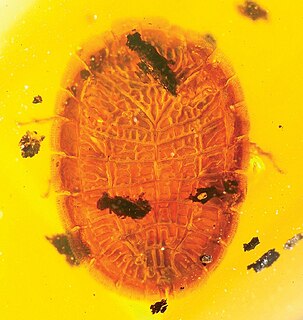 W
WAradoidea is a superfamily of true bugs. The Piesmatidae, usually placed in the Lygaeoidea, might also belong here.
 W
WAneurinae is a subfamily of flat bugs in the family Aradidae. There is at least 1 genus, Aneurus, in Aneurinae.
 W
WAneurus is a genus of flat bugs in the family Aradidae. There are at least 60 described species in Aneurus.
 W
WAradidae bear the appropriate common name, flat bugs, in reference to their (usually) extremely flattened body. With few exceptions, these often cryptic insects are of no economic importance. Common temperate genera include Aradus, Mezira, Neuroctenus, and Aneurus.
 W
WAradinae is a subfamily of true bugs in the family Aradidae. There are at least 90 described species in Aradinae.
 W
WAradus is a genus of true bugs in the family Aradidae, the flat bugs. It is distributed worldwide, mainly in the Holarctic. There are around 200 or more species in the genus.
 W
WAradus depressus is a true bug in the family Aradidae. The species is found in the Palearctic from Ireland East to Siberia. In the Southeast, the range extends to the Caucasus mountains. A. depressus is the most common species of the genus Aradus and can be found everywhere. In the Alps it occurs up to 1,600 metres (5,200 ft).
 W
WAradus lugubris is a species of flat bug in the family Aradidae. It is found in Europe and Northern Asia and North America.
 W
WMezira is a genus of flat bugs in the family Aradidae. There are more than 70 described species in Mezira.
 W
WMezirinae is a subfamily of flat bug. Distributed globally. More than 1120 described species in 124 genera.
 W
WModicarventus wisei is an endemic species of New Zealand flat bug, described by Kirman in 1989. The specimens were first collected from Unuwhao on the North Cape in February 1967 by K.A.J. Wise, but not described as a new species until 1989.
 W
WNeuroctenus is a genus of flat bugs in the Aradidae subfamily Mezirinae. There are about 7 described species in Neuroctenus.
 W
WTermitaphididae, occasionally called termite bugs, is a small tropicopolitan family of true bugs placed in the superfamily Aradoidea. Typically members of Termitaphididae are small, being an average of 2 millimetres (0.079 in)-4 millimetres (0.16 in), and flattened with laminae extending out from each body segment giving a round scale like appearance. Currently the family contains two genera and twelve known species. Members of Termitaphididae are inquilines lodging in the nests of host species of termite families Termitidae and Rhinotermitidae. Though considered a separate family in Aradoidea it has been suggested by Drs David Grimaldi and Michael Engel in 2008 that Termataphididae may in fact be highly derived members of Aradidae. Of the thirteen known species one Termitaphis circumvallata belongs to the monotypic genus Termitaphis and four of the remaining eleven species in Termitaradus are extinct, having only been found in amber. The living species are found worldwide in the tropical regions of Central and South America, Africa, Asia, and Australia.
 W
WTermitaradus is a small tropicopolitan genus of true bugs placed in the family Termitaphididae. As is typical for the family, living members of Termitaradus are small, being an average of 2 millimetres (0.079 in) to 4 millimetres (0.16 in), and flattened with laminae extending out from each body segment giving a round scale like appearance. The same is true for the extinct species with the exception of T. protera which reaches 7 millimetres (0.28 in) in length. All members of Termitaphididae are inquilines lodging in the nests of host species of termites, with Termitaradus species known only from the family Rhinotermitidae. Though considered a separate family in Aradoidea it has been suggested by Drs David Grimaldi and Michael Engel in 2008 that Termataphididae may in fact be highly derived members of Aradidae. The second genus placed in Termitaphididae, Termitaphis, contains the monotypic species Termitaphis circumvallata which inhabits nests of Termitidae (termites) in Colombia.
 W
WTermitaradus mitnicki is an extinct species of true bug in the family Termitaphididae known only from early Miocene Burdigalian stage Dominican amber deposits on the island of Hispaniola.